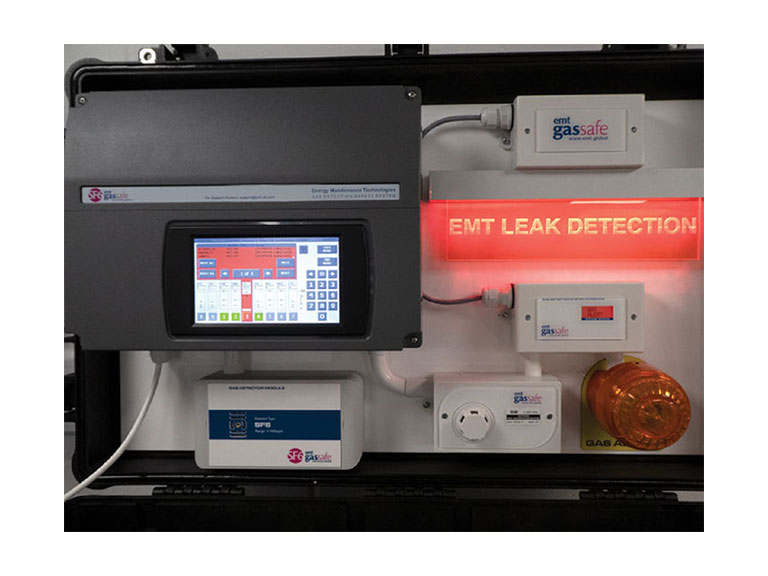From Observation to Correction: The Path of SF6 using State-of-the-Art Cameras
In the world of electrical distribution and electrical systems, the use of sulfur hexafluoride, commonly known as hexafluoride, is common due to its superior dielectric properties. However, the occurrence of even the smallest leaks can lead to major environmental problems and functional inefficiencies. This has prompted the development of cutting-edge technologies aimed at detecting these fissures swiftly and correctly. One of the most innovative solutions on the market today is the camera designed for SF6 leak detection, a sophisticated device designed to detect SF6 gas releases with remarkable exactness.
These custom cameras utilize IR technology to detect the presence of SF6 gas in the air. By recognizing the specific spectral signature of SF6, these cameras enable operators to detect leaks in power substations, electrical switchgear, and other equipment where this gas is commonly used. The capability to detect SF6 leaks not only helps maintain the stability of energy systems but also plays a crucial role in limiting GHG emissions, making our power infrastructure more eco-friendly. Knowing how these cameras operate and their effect on detecting leaks and maintenance is essential for anyone engaged in the servicing of high-voltage equipment.
Grasping SF6 and The Various Applications
Sulfur hexafluoride, or sulfur hexafluoride, is an smell-less, invisible gas that is extremely efficient as a isolating medium in electrical equipment. Because of its excellent dielectric properties, SF6 has become widely employed for high voltage breakers, switch gear, and also substations. These applications benefit of the benefits of SF6 ability to avoid electrical arcing as well as maintain safe performance standards within electrical infrastructure.
Utilization for sulfur hexafluoride within this power industry is paramount for ensuring the dependability and efficiency of power systems. It allows for streamlined device configurations, which leads to space-saving options in urban areas. Furthermore, it additionally used across multiple fields, including semiconductor manufacturing as well as medical technology, where its distinct properties play a role in enhanced performance and safety within high voltage settings.
However, despite its benefits, SF6 represents one potent greenhouse gas that has a GWP much greater compared to carbon dioxide. As a result, the detection as well as fixing of SF6 leaks is essential in minimizing environmental impact. This has prompted the development of the development of dedicated instruments, like an SF6 leak detection device, which helps with discovering as well as controlling leakages effectively in order to ensure compliance to eco-friendly guidelines.
This Mechanism Behind SF6 Leak Detection Cameras
SF6 leak detection cameras employ advanced imaging technology to locate leaks of sulfur hexafluoride gas, a compound widely used in the electrical industry for its insulating properties. The cameras are fitted with infrared sensors that can identify the specific wavelengths emitted by SF6 molecules when they are released into the atmosphere. This capability allows technicians to visualize gas leaks in actual time, differentiating them from other gases in the environment.

The working of these cameras hinges on the principle of infrared absorption. SF6 has a special absorption spectrum, meaning it absorbs infrared light at distinct frequencies. When the camera is pointed towards a potential leak, it inspects the infrared radiation and detects any irregular patterns indicative of a gas presence. This technology not only provides a graphic representation of the gas leak but also quantifies the concentration of SF6 present, enabling accurate diagnosis and quick action to resolve the issue.
In addition to their detection capabilities, SF6 leak detection camera s are engineered for user-friendliness and portability. Many models are lightweight and fitted with features like real-time display, recording functions, and various sensitivity settings, making them appropriate for field use. This combination of high-tech technology and practicality allows maintenance teams to efficiently locate and repair SF6 leaks, significantly enhancing safety and reliability in electrical infrastructure.
Repairing Sulfur Hexafluoride Leaks: Techniques and Recommended Procedures
Once a leak has been identified using an SF6 leak detection camera, the next step is immediate and successful fixes. Understanding the cause of the leak is essential. Common causes include fittings, mechanisms, and protectors. Technicians should carry out a comprehensive inspection to find out whether a simple modification or a complete component swap is necessary. In many cases, securing connections or replacing seals can efficiently eliminate small leaks without extensive interruption.
When fixes are in progress, it is essential to adhere to workplace standards to ensure safety and effectiveness. Technicians should put first safety by wearing appropriate PPE and complying with set guidelines. Additionally, ensuring that the location is well-ventilated is crucial due to the potential dangers associated with SF6 gas. After concluding repairs, it is prudent to conduct a follow-up inspection with the SF6 leak detection camera to verify that the leak has been effectively addressed.
Ultimately, implementing a consistent maintenance schedule can significantly lessen the likelihood of upcoming leaks. This includes periodic inspections using SF6 breech detection cameras, inspecting equipment, and enhancing outdated components to better alternatives. By maintaining a forward-thinking approach, organizations can improve the durability of their equipment while lessening the ecological footprint associated with SF6 breeches.